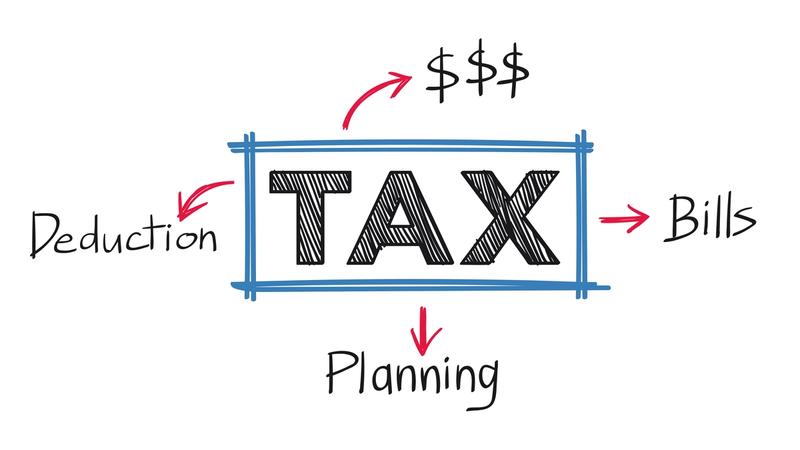Maximize Your Tax Deductions: Expert Tips
Unlock hidden tax deductions and save money with our expert advice. Maximize your tax refund today.
Temitope Ayegbusi

Many taxpayers miss out on valuable tax savings simply because they don’t claim all the tax deductions available to them. Failing to maximize deductions can cost you hundreds or even thousands of dollars each year. Some will say, nearly 70%. This oversight can result in thousands of dollars lost annually.
Understanding and leveraging the right deductions can significantly impact your financial bottom line. With expert tips and the right tools, such as an income statement generator or income tax calculator, you can ensure you're taking full advantage of the deductions available to you.
This article will guide you through the process of maximizing your tax savings, providing you with the knowledge and resources needed to reduce your tax burden effectively.
What Qualifies as a Tax Deduction?
A tax deduction is an expense that can be subtracted from your taxable income, reducing the amount of income subject to tax. Common examples include charitable donations, mortgage interest, and medical expenses. To qualify, expenses must be ordinary and necessary for your profession or business, or fall under specific categories defined by the tax code.
Imagine you’re a teletherapist who spends $80 each month on a HIPAA-compliant video conferencing platform and $120 on internet service that you use primarily for client sessions. At tax time, those costs don’t just disappear, they can qualify as tax-deductible business expenses. That means instead of being taxed on your full income, you can subtract those costs from it, lowering your taxable income and ultimately reducing the tax you owe.
Let’s look at Tax deductions for yourself, before we look at Tax deductions for your small business. Both ways, you save money.
Standard vs. Itemized Deductions: Which Is Right for You?
Taxpayers have the option to claim either a standard deduction or itemized deductions.
The standard deduction is a fixed amount that varies based on filing status. Itemized deductions, on the other hand, involve listing out eligible expenses. The choice between the two depends on which results in a larger deduction.
Key itemized deductions include:
- Mortgage interest and property taxes
- Charitable contributions
- Medical expenses , which are deductible only if they exceed 7.5% of your adjusted gross income (AGI). This includes doctor visits, hospital bills, prescriptions, and even certain long-term care expenses. Source: IRS Pub 502

How Tax Deductions Differ from Tax Credits
While both tax deductions and tax credits reduce your tax liability, they do so in different ways.
Tax deductions reduce taxable income, whereas tax credits directly reduce the amount of tax owed, dollar for dollar. For example, a $1,000 tax credit reduces your tax bill by $1,000, regardless of your tax bracket.
Most Commonly Overlooked Tax Deduction Opportunities
Many taxpayers miss out on significant savings by overlooking certain tax deduction opportunities. Understanding these deductions can help you maximize your refund and reduce your tax liability.
Home Ownership Deductions
Homeownership comes with several tax benefits. Two significant deductions often overlooked are mortgage interest and property taxes.
Mortgage Interest and Property Taxes
You can deduct the interest paid on your mortgage and property taxes. This can result in substantial savings, especially in the early years of your mortgage.
Home Office Deduction Requirements
If you use a dedicated space in your home regularly and exclusively for business, you may qualify for the home office deduction. This could include a separate office, a converted spare room, or even a small section of your home used solely for teletherapy sessions. Source: IRS Pub 587
Education-Related Expenses
Education expenses can be significant, and there are tax deductions available to help offset these costs.
- Student Loan Interest Deductions
You can deduct the interest paid on student loans, which can help reduce your taxable income.
- Lifetime Learning Credits
The Lifetime Learning Credit is a tax credit available for education expenses. It can help offset the costs of courses taken to improve your job skills or pursue further education.
Healthcare and Medical Expenses
Medical expenses can be substantial, and there are tax deductions available for certain costs.
- Qualifying Medical Costs
You can deduct medical expenses that exceed a certain percentage of your adjusted gross income. This includes costs for doctor visits, hospital stays, and prescriptions.
- Health Savings Account Benefits
Contributions to a Health Savings Account (HSA) are tax-deductible, and the funds can be used tax-free for medical expenses. HSAs offer a valuable way to save for healthcare costs.
By understanding and claiming these often-overlooked tax deductions, you can significantly reduce your tax liability and maximize your refund.

Small Business Owner's Ultimate Tax Deduction Guide
Understanding and leveraging tax deductions is a key aspect of managing a successful small business. By maximizing your IRS deductions, you can significantly reduce your tax liability and improve your bottom line.
- Business Operating Expenses
One of the most significant areas where small business owners can claim deductions is in their operating expenses. This includes:
- Rent and utilities for your business premises
- Insurance premiums for liability, property, and workers' compensation
- Office supplies and equipment
You can deduct the costs associated with renting or owning your business premises, including utilities such as electricity, gas, and water. Additionally, insurance premiums for business-related risks are deductible. Expenses for office supplies, such as stationery, printer ink, and paper, are deductible.
You can also deduct the cost of equipment, including computers, printers, and machinery, either in the year of purchase or over time through depreciation.
- Travel and Vehicle Deductions
Business-related travel expenses can be deducted, including:
- Transportation costs, such as flights, hotels, and rental cars
- Meals and entertainment, subject to certain limits
- Vehicle expenses, using either the mileage method or actual expenses
You can choose between the mileage method, which involves deducting a standard rate per mile driven for business, or the actual expense method, which requires tracking and deducting the actual costs of operating your vehicle for business purposes.
To claim travel deductions, you must keep detailed records, including receipts, invoices, and a log of your business activities. This documentation is crucial in case of an audit.
- Employee Benefits and Retirement Plans
Offering employee benefits and setting up retirement plans can provide significant tax benefits for your business. Retirement plans such as SEP IRAs and Solo 401(k)s allow you to make tax-deductible contributions for yourself and your employees.
These plans can help reduce your taxable income while providing a valuable benefit to your employees. You can also deduct health insurance premiums for yourself and your employees, providing a valuable benefit while reducing your taxable income.
By understanding and utilizing these tax deductions, small business owners can significantly reduce their tax liability and improve their financial health. It's essential to keep accurate records and consult with a tax professional to ensure you're taking advantage of all the IRS deductions available to you.
Advanced Tax Deduction Planning for Higher Incomes
As income levels rise, so does the complexity of tax planning; thus, understanding advanced tax deduction strategies becomes essential. For US business owners, other small business owners and high-income individuals, maximizing tax deductions is not just about reducing tax liability but also about optimizing financial health. There are a few things you can do as a small business owner.
- Timing Income and Expenses Strategically
Strategic timing of income and expenses can significantly impact tax deductions. Deferring income to the following year or accelerating deductions into the current year can be an effective strategy, especially for those with fluctuating incomes or nearing retirement.
- Retirement Account Contribution Strategies
Utilizing retirement accounts can offer substantial tax benefits. Contributions to traditional IRAs or 401(k)s can reduce taxable income, while certain strategies can maximize these benefits further.
For high-income earners who are otherwise ineligible for direct Roth IRA contributions, backdoor Roth IRA contributions offer a workaround, allowing for potential tax-free growth.
Essential Tools for Tracking and Maximizing Deductible Expenses
Effective tax planning involves utilizing the best tools available for identifying and recording deductible expenses. With the right resources, individuals and businesses can significantly reduce their tax liability.
Tax Preparation Software Comparison
Tax preparation software is a crucial tool for maximizing deductions. Popular options include TurboTax, H&R Block, and TaxSlayer. When comparing these, consider factors such as ease of use, accuracy, and the ability to identify potential deductions.
Key Features to Look For:
- Comprehensive income reporting
- Automatic deduction identification
- Support for various tax forms
Expense and Accounting software
Expense tracking apps like Adam by Tyms, Expensify, Mint, and QuickBooks can help organize financial records, making it easier to identify deductible expenses throughout the year.
While free options are available, paid apps often offer more advanced features, such as automated expense categorization and receipt scanning.
Features to Look For
- Easy receipt tracking
- Automated expense logging
- Integration with accounting software
Income Statement Generators and Tax Calculators
Tools like income statement generators can help summarize financial data, while tax calculators provide estimates of tax liability. These can be invaluable for planning.
Use our free Income Statement Generator tool and Tax calculator tool
For complex tax situations, hiring a tax expert can be beneficial. They can provide personalized advice and ensure all eligible deductions are claimed.
Effective implementation of your tax deduction strategy requires careful planning and organization. Utilize essential tools like tax preparation software, expense tracking apps, and professional help when needed to ensure you're making the most of your eligible deductions.
Use reputable accounting software like Adam by Tyms to manage your income and expenses with direct bank synchronization.
By taking control of your tax deductions, you can enjoy substantial tax savings and keep more of your hard-earned money. Start implementing your personalized tax deduction strategy today and watch your savings grow.
FAQ
What is the difference between a tax deduction and a tax credit?
A tax deduction reduces your taxable income, while a tax credit directly reduces the amount of tax you owe. For example, a $1,000 tax deduction might save you $200 in taxes, depending on your tax bracket, whereas a $1,000 tax credit would save you $1,000 in taxes.
Can I claim both standard and itemized deductions on my tax return?
No, you can either claim the standard deduction or itemize your deductions, but you cannot do both. You should choose the option that results in a larger deduction.
What are some commonly overlooked tax deductions for small business owners?
Some commonly overlooked tax deductions for small business owners include home office deductions, business use of their vehicle, and professional fees such as accounting and legal services. You can also deduct business-related travel expenses, meals, and entertainment.
What is the qualified business income (QBI) deduction, and how do I qualify?
The QBI deduction allows eligible self-employed individuals and small business owners to deduct up to 20% of their qualified business income. To qualify, your business must be a pass-through entity, such as a sole proprietorship, partnership, or S corporation, and your taxable income must be below certain thresholds.
How can I maximize my tax deductions for investment expenses?
To maximize your tax deductions for investment expenses, you can deduct investment interest expenses, such as margin interest, and investment advisory fees. You can also harvest capital losses to offset capital gains and reduce your taxable income.
What are some essential tools for tracking and maximizing deductible expenses?
Some essential tools for tracking and maximizing deductible expenses include tax preparation software, such as TurboTax or H&R Block, expense tracking apps, like Adam by Tyms, Expensify or Shoeboxed, and income statement generators, such as QuickBooks or Xero. You can also use an income tax calculator to estimate your tax liability and plan your deductions accordingly.
You can also read:

How to Set Up Custom Rules for Bank Transaction Categorization
Most accounting tools rely heavily on these rules to function properly. But with Adam by Tyms, rule-setting is optional . Adam can auto categorize your transactions accurately on its own by learning your spending patterns and behavior.
Temitope Ayegbusi
Dec 3, 2025

How to Convert a 3-Month Bank Statement Into a Profit & Loss Report (Free Tool Included)
You can convert a 3-month bank statement into a clean Profit & Loss (P&L) report in minutes using Adam by Tyms.
Temitope Ayegbusi
Nov 25, 2025